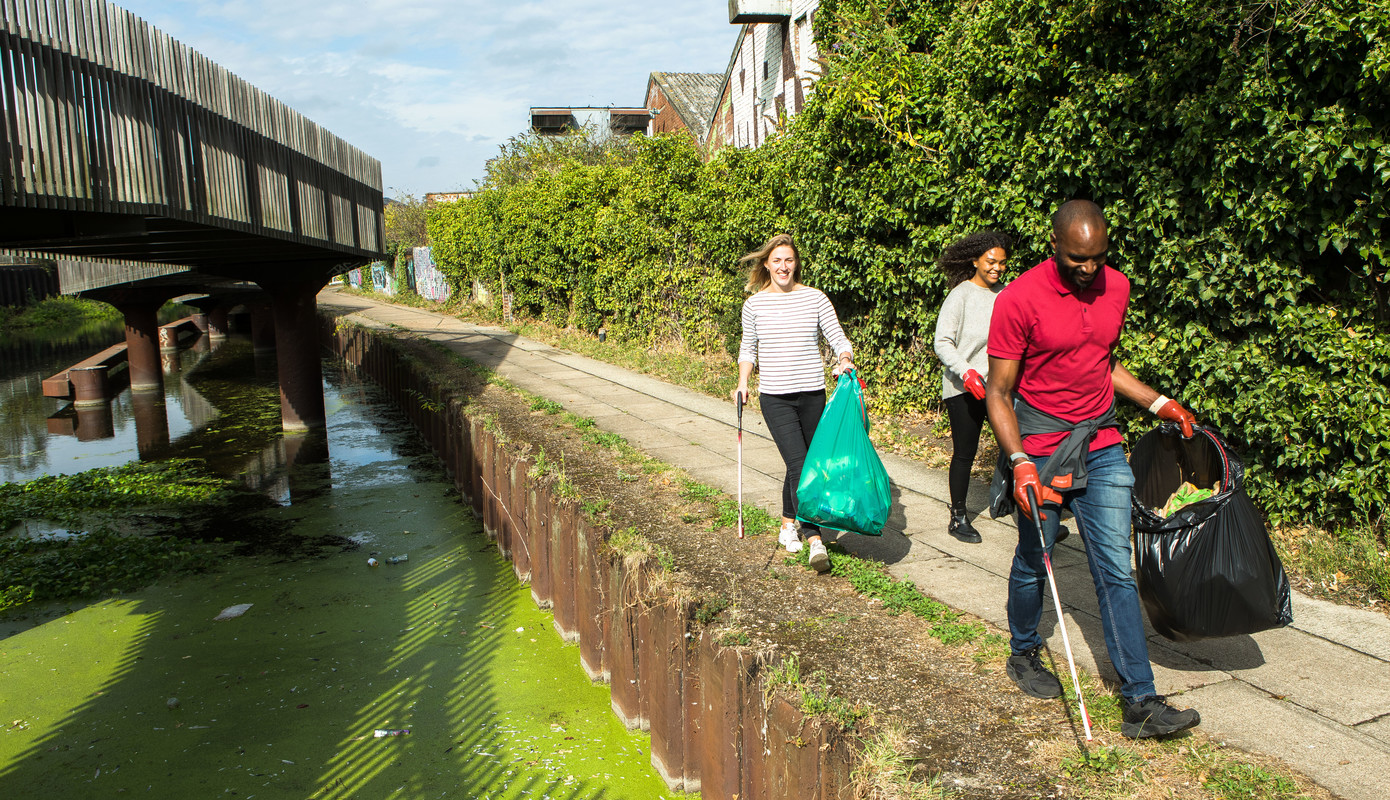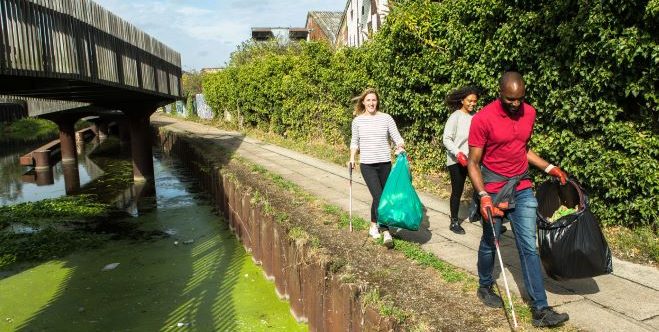Rivers and watercourses

This guide gives an overview of who is responsible for clearing litter from rivers and watercourses.
A main river is defined in law as ‘a watercourse shown as such on a main river map and includes any structure or appliance for controlling or regulating the flow of water into, in or out of the channel’.
A watercourse is defined as ‘any natural or artificial channel above or below ground through which water flows, such as a river, brook, beck, ditch, mill stream or culvert (excluding public sewers)’.
Anyone who owns land above water or with a watercourse running through it is regarded as a ‘riparian owner’, that is, the person responsible for it and has duties.
If the land is rented to another individual or body, there must be an agreement regarding who will manage these duties. However, most watercourses and rivers are actually owned and managed by the Canal and River Trust or the Environment Agency.
Legislation
The legislation which applies to the clearance of litter from watercourses is:
- Environmental Protection Act 1990
- Clean Neighbourhoods and Environment Act 2005
- Anti-Social Behaviour, Crime and Policing Act 2014
- Transport Act 1968
- Other legislation: 2010 Waste (Wales) Measure, 2015 Wellbeing of Future Generations (Wales) Act
Responsibility for clearance of litter from watercourses
Councils: District and borough councils do not have a specific duty to clear litter from rivers or the sea. Councils have powers to ensure that non-main rivers, becks and ordinary watercourses are maintained and can undertake clearance work and impose a charge for this if riparian owners do not fulfil maintenance duties. Councils help to collect any debris and litter which may have been cleared from rivers and take it away for safe disposal or to be recycled.
Private landowners: Anyone who owns land above water or with a watercourse running through or adjacent to it is regarded as a ‘riparian owner’ and has duties and rights. Landowners (on which the watercourse runs) are principally responsible for clearing litter and other obstructions such as animal carcasses, from the rivers and banks, even if they did not come from the owner’s land. However, most watercourses and rivers are actually owned and managed by the Canal and River Trust or the Environment Agency.
Canal and River Trust: The removal of rubbish by canal owners is required only where it is interfering in navigation. It is unclear whether litter or fly-tipped waste needs to be removed for amenity purposes. For further information visit the Canal and River Trust website.
Environment Agency: The Environment Agency has responsibility for regulating water quality in rivers and managing the potential risk of flooding but does not have any specific duty to keep rivers and canals clear of litter or enforce against littering. However, the Environment Agency has an annual maintenance programme to clear obstructions from rivers that might cause a flood risk (typically items which have been fly-tipped, such as tyres). The Environment Agency is the designated Land Drainage Authority for main rivers and has powers to ensure that rivers are maintained, undertake clearance work and charge riparian owners who have not fulfilled their duties of maintenance.
Volunteers: More and more people, especially along the waterways, are picking up other people’s litter. Volunteer parties transform whole lengths of canal in a day of picking up rubbish with tongs, rakes and gloved hands while some clear litter in the water from kayaks or paddleboards.






